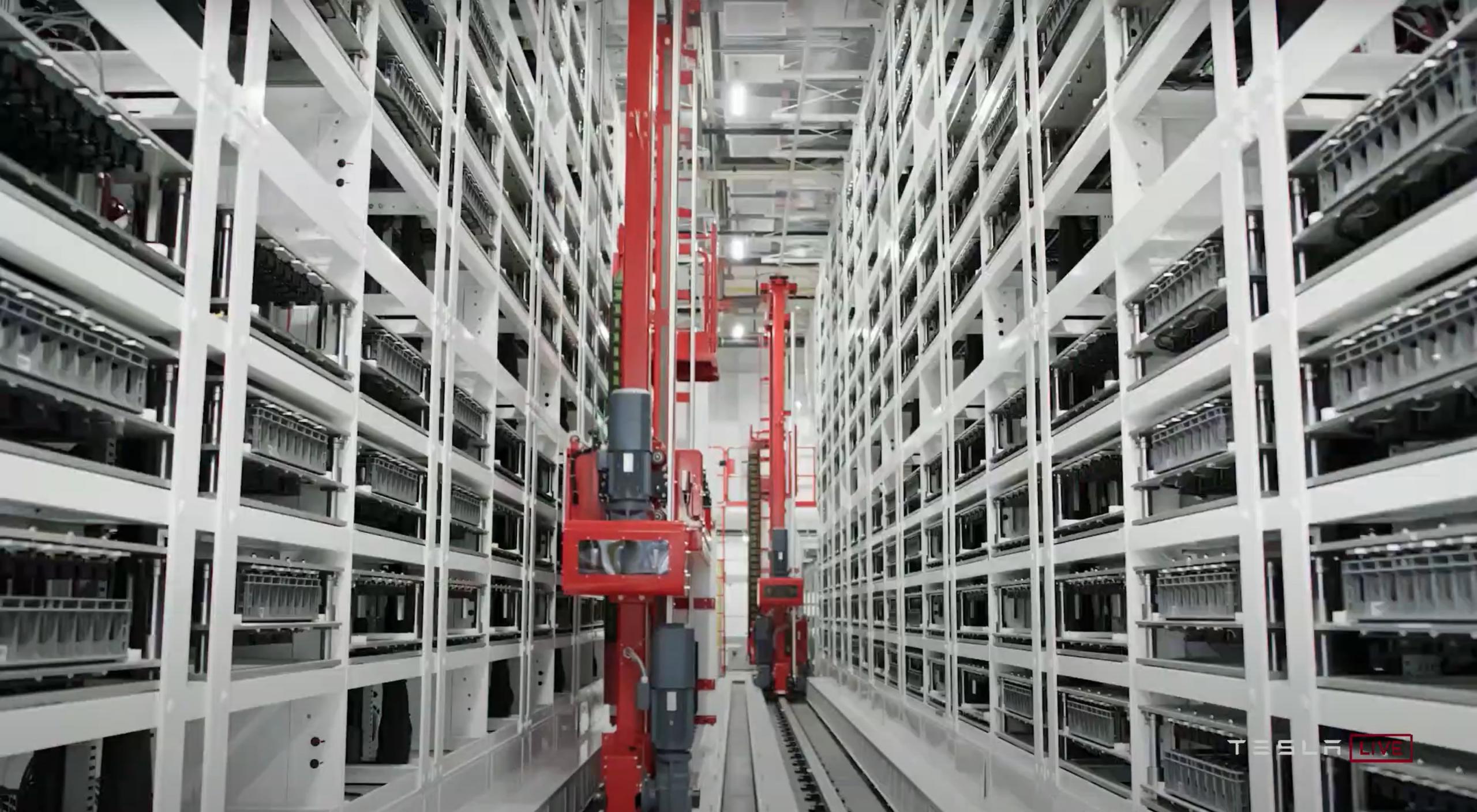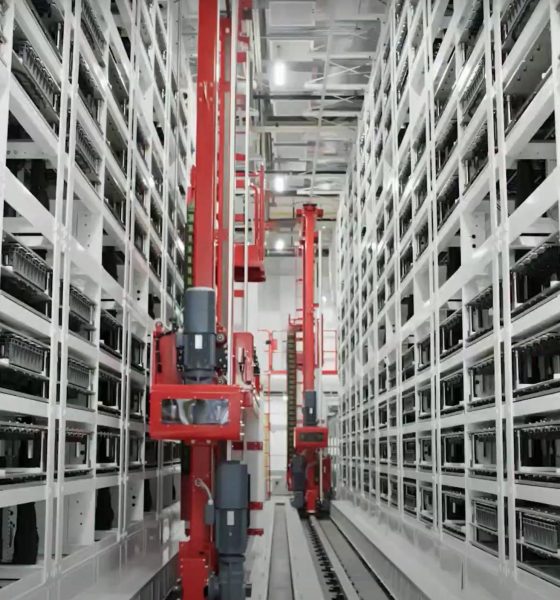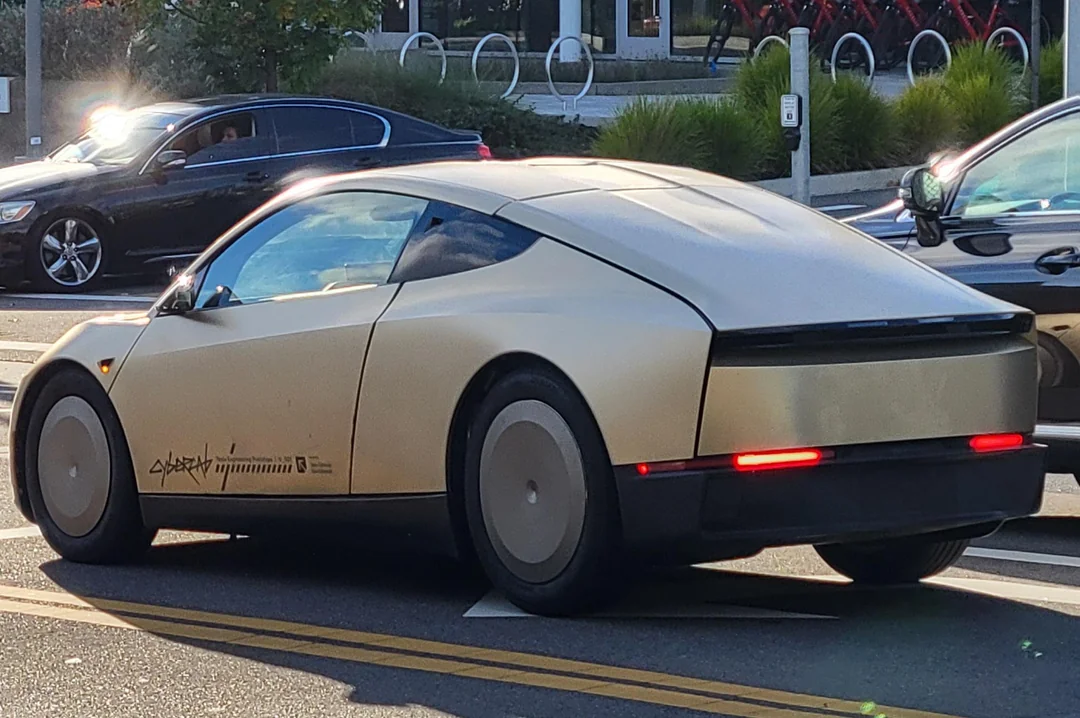

News
Tesla partners Panasonic and CATL are setting up big battery operations in Europe
As Tesla continues the buildout of its Gigafactory Berlin facility, some of the electric car maker’s battery partners are also setting their sights on the region. Panasonic, Tesla’s longtime battery partner, is looking to explore a big battery venture in Norway. CATL, a key partner for Giga Shanghai’s Model 3 production, is also setting up shop just over 200 miles away from the municipality where Giga Berlin is located.
Europe seems to be on track to become an EV capital, with the region recently revealing its intentions to roll out an aggressive phase-out of internal combustion engine cars. As noted by Barron’s, at least 12 countries are planning a ban on ICE cars in the coming years. UK Prime Minister Boris Johnson even announced on Wednesday that a ban on the sale of gas and diesel vehicles will take effect by 2030.
Amidst this shift to electric cars, the supply of batteries will likely become more important than ever in the coming years. Battery supply will most definitely be a necessity for carmakers, especially as more and more companies begin rolling out large numbers of EVs. This seems to be one of the reasons why Panasonic, Norwegian state-owned oil company Equinor, and Norwegian aluminum group Hydro announced on Wednesday that they had formed a strategic partnership to set up a green battery business in Norway.
The group is looking to complete the initiative’s exploratory phase by mid-2021. The group also aims to look into the development of an integrated supply chain for the production of batteries. Mototsugu Sato, Panasonic’s executive vice president, explained the group’s aims in a statement. “This collaboration combines Panasonic’s position as an innovative technology company and leader in lithium-ion batteries, with the deep industrial experience of Equinor and Hydro,” he said.
CATL, Tesla China’s battery supplier for Gigafactory Shanghai’s LFP Model 3 batteries is also building a facility at Erfurt, Germany that is expected to begin producing batteries around 2022. The facility is quite substantial, with an estimated annual output of about 24 GWh in its final stages. What is quite interesting is that Erfurt is just about 201 miles away from Grunheide, where Tesla’s Gigafactory Berlin is being built.
Little is known about CATL’s plans for its Erfurt factory, but it would not be surprising if the Chinese battery giant becomes a supplier for Tesla’s electric cars in Germany in the future, even if the electric car maker launches its own battery cell production facility in Giga Berlin. Tesla, after all, intends to produce a mass-market $25,000 car in its Berlin plant, which would likely use low-cost, cobalt-free lithium-iron-phosphate (LFP) batteries. Such cells are already being used in the Made-in-China Model 3 Standard Range Plus, which uses CATL-made LFP cells.
Amidst Europe’s aggressive push against the internal combustion engine, it would not be surprising if Tesla’s Gigafactory Berlin ends up perennially operating at full capacity once it enters production. With the Model Y competing in the crossover market and a $25,000 car being positioned for more affordable segments, Tesla may very well end up commanding a substantial portion of Europe’s electric car market.

News
Tesla Model 3 named New Zealand’s best passenger car of 2025
Tesla flipped the switch on Full Self-Driving (Supervised) in September, turning every Model 3 and Model Y into New Zealand’s most advanced production car overnight.

The refreshed Tesla Model 3 has won the DRIVEN Car Guide AA Insurance NZ Car of the Year 2025 award in the Passenger Car category, beating all traditional and electric rivals.
Judges praised the all-electric sedan’s driving dynamics, value-packed EV tech, and the game-changing addition of Full Self-Driving (Supervised) that went live in New Zealand this September.
Why the Model 3 clinched the crown
DRIVEN admitted they were late to the “Highland” party because the updated sedan arrived in New Zealand as a 2024 model, just before the new Model Y stole the headlines. Yet two things forced a re-evaluation this year.
First, experiencing the new Model Y reminded testers how many big upgrades originated in the Model 3, such as the smoother ride, quieter cabin, ventilated seats, rear touchscreen, and stalk-less minimalist interior. Second, and far more importantly, Tesla flipped the switch on Full Self-Driving (Supervised) in September, turning every Model 3 and Model Y into New Zealand’s most advanced production car overnight.
FSD changes everything for Kiwi buyers
The publication called the entry-level rear-wheel-drive version “good to drive and represents a lot of EV technology for the money,” but highlighted that FSD elevates it into another league. “Make no mistake, despite the ‘Supervised’ bit in the name that requires you to remain ready to take control, it’s autonomous and very capable in some surprisingly tricky scenarios,” the review stated.
At NZ$11,400, FSD is far from cheap, but Tesla also offers FSD (Supervised) on a $159 monthly subscription, making the tech accessible without the full upfront investment. That’s a game-changer, as it allows users to access the company’s most advanced system without forking over a huge amount of money.
News
Tesla starts rolling out FSD V14.2.1 to AI4 vehicles including Cybertruck
FSD V14.2.1 was released just about a week after the initial FSD V14.2 update was rolled out.

It appears that the Tesla AI team burned the midnight oil, allowing them to release FSD V14.2.1 on Thanksgiving. The update has been reported by Tesla owners with AI4 vehicles, as well as Cybertruck owners.
For the Tesla AI team, at least, it appears that work really does not stop.
FSD V14.2.1
Initial posts about FSD V14.2.1 were shared by Tesla owners on social media platform X. As per the Tesla owners, V14.2.1 appears to be a point update that’s designed to polish the features and capacities that have been available in FSD V14. A look at the release notes for FSD V14.2.1, however, shows that an extra line has been added.
“Camera visibility can lead to increased attention monitoring sensitivity.”
Whether this could lead to more drivers being alerted to pay attention to the roads more remains to be seen. This would likely become evident as soon as the first batch of videos from Tesla owners who received V14.21 start sharing their first drive impressions of the update. Despite the update being released on Thanksgiving, it would not be surprising if first impressions videos of FSD V14.2.1 are shared today, just the same.
Rapid FSD releases
What is rather interesting and impressive is the fact that FSD V14.2.1 was released just about a week after the initial FSD V14.2 update was rolled out. This bodes well for Tesla’s FSD users, especially since CEO Elon Musk has stated in the past that the V14.2 series will be for “widespread use.”
FSD V14 has so far received numerous positive reviews from Tesla owners, with numerous drivers noting that the system now drives better than most human drivers because it is cautious, confident, and considerate at the same time. The only question now, really, is if the V14.2 series does make it to the company’s wide FSD fleet, which is still populated by numerous HW3 vehicles.
News
Waymo rider data hints that Tesla’s Cybercab strategy might be the smartest, after all
These observations all but validate Tesla’s controversial two-seat Cybercab strategy, which has caught a lot of criticism since it was unveiled last year.

Toyota Connected Europe designer Karim Dia Toubajie has highlighted a particular trend that became evident in Waymo’s Q3 2025 occupancy stats. As it turned out, 90% of the trips taken by the driverless taxis carried two or fewer passengers.
These observations all but validate Tesla’s controversial two-seat Cybercab strategy, which has caught a lot of criticism since it was unveiled last year.
Toyota designer observes a trend
Karim Dia Toubajie, Lead Product Designer (Sustainable Mobility) at Toyota Connected Europe, analyzed Waymo’s latest California Public Utilities Commission filings and posted the results on LinkedIn this week.
“90% of robotaxi trips have 2 or less passengers, so why are we using 5-seater vehicles?” Toubajie asked. He continued: “90% of trips have 2 or less people, 75% of trips have 1 or less people.” He accompanied his comments with a graphic showing Waymo’s occupancy rates, which showed 71% of trips having one passenger, 15% of trips having two passengers, 6% of trips having three passengers, 5% of trips having zero passengers, and only 3% of trips having four passengers.
The data excludes operational trips like depot runs or charging, though Toubajie pointed out that most of the time, Waymo’s massive self-driving taxis are really just transporting 1 or 2 people, at times even no passengers at all. “This means that most of the time, the vehicle being used significantly outweighs the needs of the trip,” the Toyota designer wrote in his post.
Cybercab suddenly looks perfectly sized
Toubajie gave a nod to Tesla’s approach. “The Tesla Cybercab announced in 2024, is a 2-seater robotaxi with a 50kWh battery but I still believe this is on the larger side of what’s required for most trips,” he wrote.
With Waymo’s own numbers now proving 90% of demand fits two seats or fewer, the wheel-less, lidar-free Cybercab now looks like the smartest play in the room. The Cybercab is designed to be easy to produce, with CEO Elon Musk commenting that its product line would resemble a consumer electronics factory more than an automotive plant. This means that the Cybercab could saturate the roads quickly once it is deployed.
While the Cybercab will likely take the lion’s share of Tesla’s ride-hailing passengers, the Model 3 sedan and Model Y crossover would be perfect for the remaining 9% of riders who require larger vehicles. This should be easy to implement for Tesla, as the Model Y and Model 3 are both mass-market vehicles.









